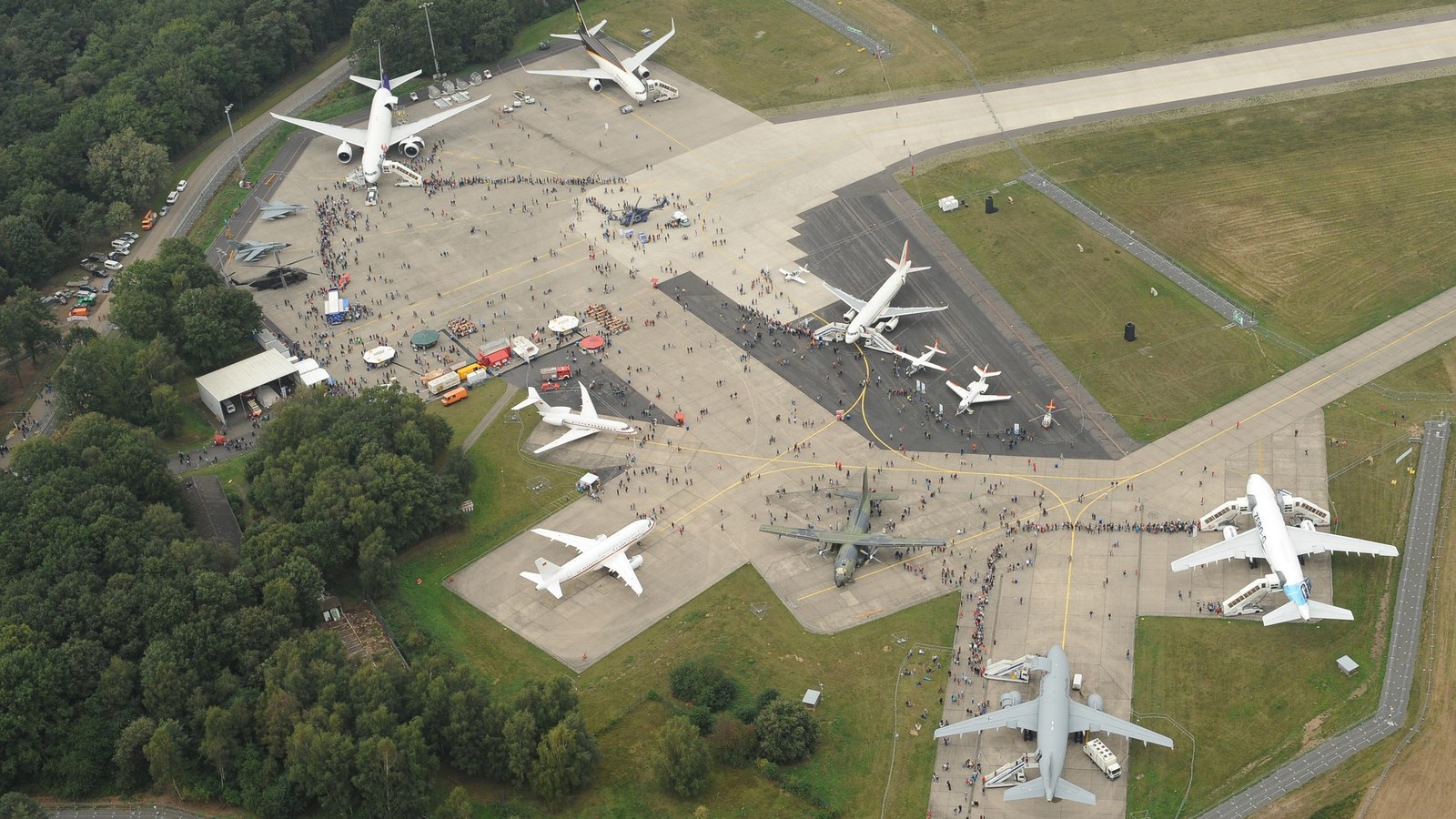20 September 2015 – German Aerospace Day in Cologne

On 20 September 2015, the German Aerospace Center (Deutsches Zentrum für Luft- und Raumfahrt; DLR) and its partners, the European Space Agency (ESA), Cologne/Bonn Airport and the German Air Force, will be hosting German Aerospace Day (Tag der Luft- und Raumfahrt) in Cologne. On the day, DLR researchers will open the doors to their institutes and laboratories and allow the public to take a look at their work. There will also be a major aircraft exhibition, where visitors will be able to see DLR's unique research aircraft, German Air Force aircraft and an Emirates Airbus A380.
There will be something for the younger visitors too – children can learn about the scientists’ work and take part in a number of experiments. As well as these insights into science, they will have the opportunity to attend a programme involving numerous activities that encourage participation. DLR expects more than 10,000 visitors at the approximately 50-hectare site.
A close look at the work of space researchers
Microgravity experiments, planetary exploration and Earth observation: DLR's space activities contribute to our ever-expanding knowledge of the Universe. On Earth, this knowledge is used to benefit research in fields such as medicine, the environment and materials. At German Aerospace Day, visitors have the opportunity to take a look inside the spaceflight control room, or the Microgravity User Support Center (MUSC) LCC. This is where the Philae lander – Rosetta’s robotic lander, which landed on Comet 67P/Churyumov-Gerasimenko in November 2014 – is controlled. Visitors can also see first-hand how tomatoes are grown in the enclosed environment of space laboratories. The sister laboratory of the International Space Station, :envihab (environment habitat) conducts research for space and Earth. It houses small, enclosed ecosystems, which one day may supply astronauts with fresh vegetables on long-duration missions to space, or contribute to local food production in heavily built-up megacities on Earth. Using simulation and software technology, visitors can even visit Mars and take a virtual 3D flight over our planetary neighbour.
Aircraft and helicopters up close
DLR will be displaying many of its research aircraft in a major aircraft exhibition as a part of German Aerospace Day. This will include the largest amongst them, the Airbus A320 ATRA, which is used by researchers for experimentation and the continuous development of new technologies in aviation. The unveiling of the new A310 ZERO-G aircraft from French company Novespace will also take place on the day – used by DLR for microgravity research, together with ESA and the French space agency (CNES). The former ‘Chancellor Airbus’ has been converted into a zero-g aircraft and was first used for parabolic flights in April 2015. This involves flying in a parabolic flight path, which generates up to 22 seconds of microgravity inside the aircraft. Scientists can use these seconds to carry out experiments under microgravity conditions.
The German Air Force is also contributing several aircraft to the exhibition, including the Airbus A310 MRTT MediEvac that is used to transport critically injured people over large distances, the Transall C-160D transport aircraft and the four-engine Airbus 400M. In addition, the Emirates airline will be presenting an Airbus A380 on German Aerospace Day.
Ample time for small researchers
Especially for children, there is a programme tailored to inspire the younger generation attending German Aerospace Day. As VIP Kids, children can go on tours of the institutes and laboratories, ask the scientists questions and take part in interesting and fun activities. On the tours, children will visit places at DLR such as the research aircraft and the Institute of Solar Research, where they can learn how power can be generated from solar energy, even at night. On a tour of ESA's European Astronaut Centre, they will learn how astronauts prepare for their space missions. Another educational activity on the day is provided by the DLR_School_Lab – older children will be researchers themselves and carry out short, yet fascinating experiments. There will be a range of activities for children to explore on-site – from telescopes that can be used for observing the Sun, to the ‘Löwenzahn Bauwagen’.
The popular German children’s television programme Westdeutscher Rundfunk Mouse will also be putting on a series of shows on the DLR children's stage. These include ‘The Experimental Show’, ‘Heckers-Hexenküche’ (experiments for children) and the ‘Tanzalarm-Show’ (dancing for children).Television presenter Juri Tetzlaff will also be on stage, alongside with numerous other acts.
All of the programme highlights, photos and background information can be found on the DLR German Aerospace Day 2015 special site. Instructions on how to get to DLR in Cologne are also available. Use of public transport is recommended, with a free shuttle from the S-Bahn stations already arranged. Entry to all of the exhibitions in the main event area is free. Registration for the children's tours and the DLR_School_Lab is possible on-site on the day of the event.


